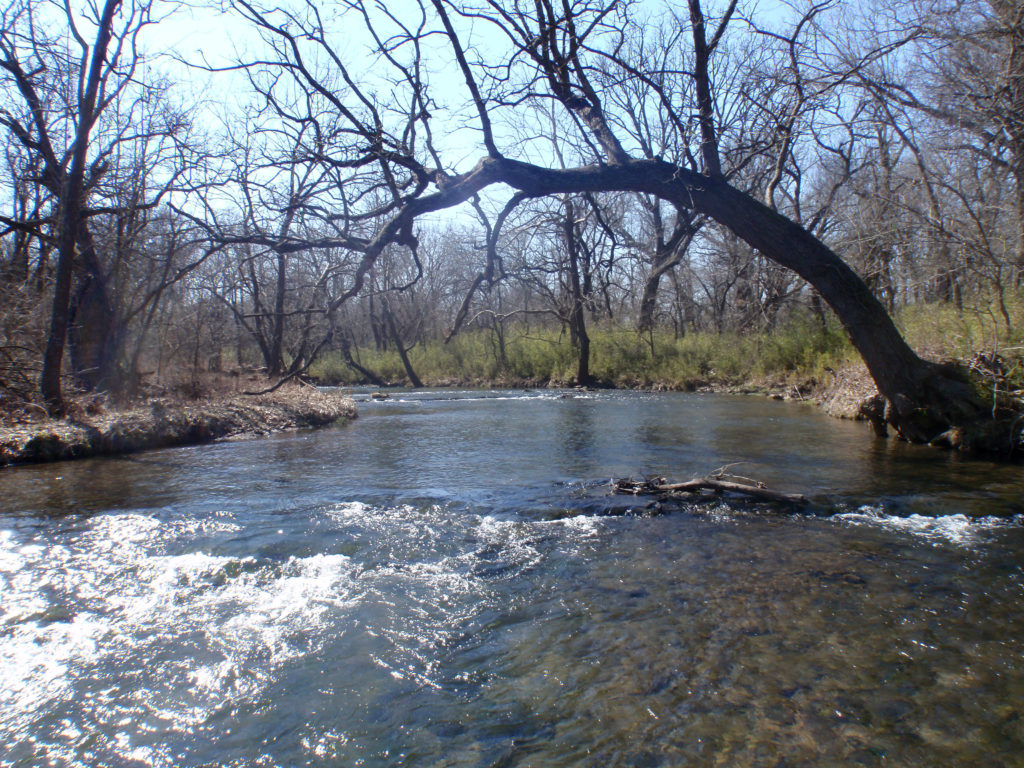Conservation Commission, Partners Recognized for Stream Restorations
The Environmental Protection Agency (EPA) has recognized Oklahoma as a regional and national leader in reducing nonpoint source pollution in waterways. The EPA/State Strategic Partnership Team Regional Honor Award went to the Oklahoma Conservation Commission (OCC), Oklahoma Office of the Secretary of Energy & Environment, and EPA Region 6 Project Officers. The award recognizes the successful Nonpoint Source Program partnership between OCC, Conservation Districts, Natural Resource Conservation Service (NRCS), EPA Region 6, and landowners that resulted in 11 stream restorations in 2012.
Clear as Mud
Nonpoint source pollution is a pollutant such as fertilizer running off of a lawn or field into a stream, or motor oil dripping beneath a car and making its way into storm drains. A general rule of thumb is, if you can’t point a finger at the source, it’s nonpoint source pollution. In the stream restorations OCC was recognized for, the primary issues were turbidity (cloudiness), which can be caused by streambank erosion, and high levels of bacteria indicative of fecal matter from warm-blooded animals.
Getting It Done
The award-winning partnership combined OCC’s stream health monitoring with NRCS programs that assist landowners to install best management practices (BMPs). BMPs greatly reduce nonpoint source pollution in impaired streams and include constructing alternative sources of water so livestock don’t loiter in streams, creating buffer zones of unworked land between crops and streams, and adopting reduced tillage management styles that reduce soil erosion from cropland.
While EPA requires a single restoration success story from each state per year, the Oklahoma partnership raised the bar by exceeding that goal by more than ten times. The success demonstrates the value of voluntary conservation programs and the importance of water quality monitoring to measure results.
“The agricultural community has an often challenging relationship with EPA,” said Shanon Phillips, OCC Water Quality Division Director. “But, through the Nonpoint Source Pollution program, EPA provides funding and technical support for the Oklahoma partnership to prove that agricultural producers are protecting the environment. It’s great to be recognized for any successful program, but the real value comes from the recognition that Oklahoma rural landowners are voluntarily solving problems, just as they have since the days of the Dust Bowl.”

To learn more about the conservation partnership’s incredible work in stream restoration for 2012, follow the links below:
